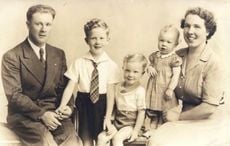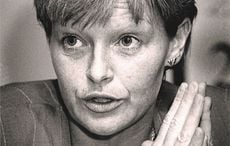A powerfully poignant yarn about the special little village of Kiltyclogher in Co. Leitrim touched my hard enough heart. The story related how the surviving 233 residents in the village are using all the force of modern media tactics to try and preserve their future wellbeing.
They were warmly inviting folk from anywhere in the world, but maybe especially from Irish cities where housing is today a major problem to come down and settle in Kiltyclogher and infuse the place with new life and a brighter future.
Can I say straightaway that is a special offer indeed. No matter where you are now residing, either overseas or in an Irish or British city, and despite resettlement problems of one kind or another, I can state without fear of contradiction that Kiltyclogher and its communal heart of pure gold has almost certainly more to offer you and yours than you can bring to it.
I know Kiltyclogher well for many years and will admit to being biased in its favor. That bias was created by the warmest of memories from the time I was a young man growing up just across the border in Co. Fermanagh.
I will factually record here a few of those to support my point. For example when I was a cub reporter for The Fermanagh Herald, learning my trade, I came to know a Michael Shanley who was then the headmaster of the local vocational school and who, in many ways, in his time and season, was virtually as much a patriot to his people as local son Sean MacDiarmada, the Easter Rising hero was away back in the GPO in 1916.
Shanley, an educator in the widest sense of the word for all his students, maybe saw through the decades ahead to the point where Kiltyclogher would be brought to its knees by enforced emigration. With few jobs locally in north Leitrim in the county called always the Cinderella County, Shanley not alone promoted Kiltyclogher through the local and national press at every opportunity, but also prepared his young students for the challenges which the wide world would throw at them when they left home, even if they were fortunate enough to only have to travel to Dublin.
In the square in Kiltyclogher there is a unique statue in honor of Sean MacDiarmada who, like the young generations after him, had to leave Kiltyclogher as a youth to gain further education and opportunity in the Dublin of his day. The statue is unique in its simplicity. He is rendered as he was, a slight enough country boy with a wistful and even sad expression on his stone face.
You could be forgiven for thinking he also foresaw the harsh social and economic times ahead. Michael Shanley told me long ago that MacDiarmada, a special friend of the old Fenian Tom Clarke, fell victim to polio as a young man and though he was in the GPO for the fighting, he could not man a front line post because he could barely walk without the aid of a cane.
To the best of my knowledge that is accurate. But he did his bit in the post office as best he could, cane and all and, it is recorded locally, faced the inevitable firing squad with great bravery in the end.
Another Kiltyclogher memory from my youth has always stayed with me. We Fermanagh lads would cross the border on Sunday nights to dance and chase girls in the fabled Ballroom of Romance in nearby Glenfarne.
One night one of our number was leaving home a Kiltyclogher girl after the dance and our old banger of a car broke down totally in the heart of the village in the small hours of the morning. No cell phones back then to summon aid, and none of us were able to get the car going again.
However, hearing the battery rapidly going flat, a local man came out unbidden from his home in which a party was being held, called a neighbor who was a mechanic, and invited the four of us to his house party. There was music and dancing on the stone floor, great craic everywhere.
We were welcomed, fed and watered, and it was with the greatest of difficulty that we were able to press a 10 shilling note into the hand of the mechanic when he got our old car going again.
And the people of that house waved us away from their door as we departed, and warned us for God's sake to be careful crossing the bloody border down the road. Kiltyclogher that night, for sure, was better craic than the Ballroom of Romance.
That kind of generous friendship, with the best of music and dancing at the drop of a hat, garnished every visit I ever made afterwards to Kiltyclogher.
Sadly these were few because, like the village youth, I also had to move away from the north west to make my living. But you don't forget villages and communities with that kind of spirit.
To my certain knowledge, despite the dwindled population, it survives to this day, and already there are outside folk who moved to Kiltyclogher in the recent past, notably creative people like artists and musicians who are already contributing to a people and place which refuses to lie down and die. And Kiltyclogher, I am sure, will rise above its current pressures.
Again, poignantly, the locals are worried because there were only 15 pupils in their two-teacher primary school when the summer holidays came. The future of one of the teachers, maybe even the future of the school itself, is threatened unless other families with young children boost the numbers when school resumes in September.
Given the energy which a resilient people are pumping into their current campaign, I hope and pray that there is a transfusion of new young blood into the benches in the next few days. That hopefully will happen.
Then maybe, after all these years, visitors to Kiltyclogher might be able to spot the beginnings of the ghost of a smile on the young stone face of Sean MacDiarmade. I will keep ye posted.




Comments